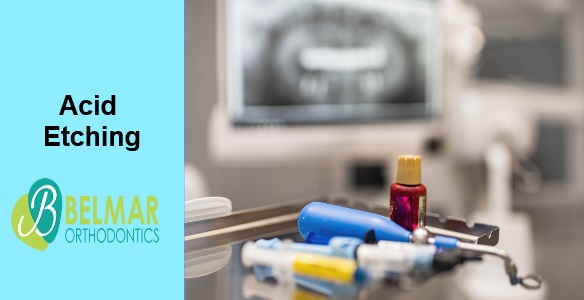
Acid etching is using an acidic substance to prepare the tooth’s enamel for the application of dental adhesive. The layer is microscopically roughened as a result of the acid, which results in increased retention of the resin sealant. Etching the teeth with a dental acid eliminates the smear layer and opens up the tubules in the enamel.
What does acid etching do to a tooth?
What acid etching does to a tooth is that it is roughening up the enamel of the tooth in preparation for the application of adhesive. The procedure of utilizing an acidic material, known as acid etching, serves to enhance the retention of resin sealant by microscopically roughening the surface of the enamel. This is accomplished by the use of an acidic substance.
Does acid etching damage teeth?
The demineralization of the enamel in the tooth is caused by the acid etching, although the teeth themselves are not damaged in any way by the process. This can result in an increased porosity in the tooth, which can lead to an increased amount of water deposition on the surface of the tooth.
What are the different acid etching techniques?
Total acid etching
When it is necessary to place a significant quantity of bonding material or when retention may be a concern, the acid etching method known as total acid etching is the one that works best. Etching under this method produces a more secure bond, making it the superior method in cases when the tooth preparation does not extend particularly deeply or come close to the nerve (dental pulp).
Selective etching
A method known as selective etching involves applying phosphoric acid to the enamel a tooth at a time. Patients who have a propensity to have sensitivity in the deep parts of the tooth are the ideal candidates for this treatment, as it helps to decrease post-operative sensitivity.
Self-adhesive
It is a universal adhesive that combines acid etching and bonding chemicals, and it is coated onto the tooth in a single process. The self-adhesive is applied to the tooth in this stage. This method is helpful for restoring a tooth that a dental practitioner believes will not have difficulty keeping its new replacement in place.
What kind of acid is used for etching teeth?
Phosphoric acid is the type of acid used for acid etching. The most common concentration is 35%, however, the percentage may vary anywhere from 30% to 50% depending on the use and formulation. In order to prevent the etchant from running when it is applied to the tooth’s surface, the acids are usually in gel form.
How long does acid etching take?
The time required for the acid etching is typically anything from a few seconds to one minute. Etching enamel and dentin usually only take between 15 and 30 seconds to complete. It is essential to give it a quick rinse for fifteen seconds in order to get rid of the phosphoric acid residue and the smear layer.
What dental procedures require Acid Etching?
Some of the Dental Procedures in which Acid Etching is used are:
- Dental Bonding
- Dental Veneers
- Dental Crowns

